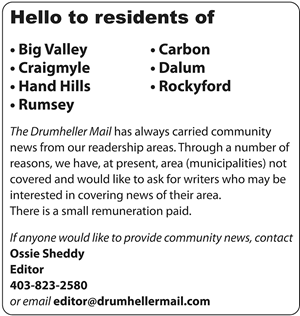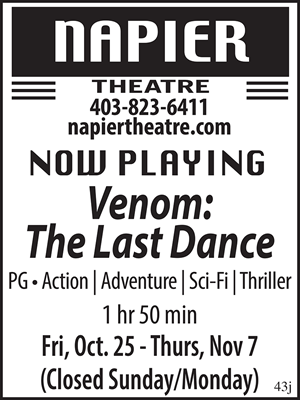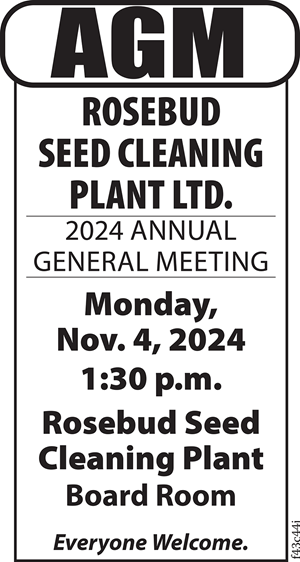
Some residents of the valley may know Dr. Don Brinkman as the current Director of Preservation and Research at the Royal Tyrrell Museum. Others may know him with his fiddle in hand playing with the Plaid Stallions or Wayfaring Fiddlers.
Others may know him as a kid from Craigmyle, son of Alfred and Joyce Brinkman, and grandson of farmer/botanist/geologist A.T. Brinkman.
“When I was a kid we would come to Drumheller for shopping trips, or when we had someone staying with us we’d take them to town to see the dinosaurs.”
The rocks in the Drumheller Valley would serve as the inspirations for Brinkman to pursue palaeontology as a career.
“I would collect marine invertebrates from the Bearspaw Formation and had my own little collection of fossils.”
His interest in the prehistoric past led him away from his home in Craigmyle, and took him to Edmonton to study palaeontology at the University of Alberta.
After receiving his Bachelor of Science he went on to complete his PhD in 1979 at McGill University in Montreal by studying the structure and function of the ankle joint in reptiles.
For two years Brinkman worked at the Museum of Comparative Zoology at Harvard, until he heard about a new up and coming museum being built practically in his backyard.
“I had a two year contract, and was about to get another when I heard that they were building a museum in Drumheller,” said Brinkman. “It was really good timing.”
During the early days of the creation of the Tyrrell Museum Brinkman was responsible for research about non-dinosaurian reptiles and helping to create the exhibits about many of them.
This led to Brinkman’s interest in fossil turtles and his world-wide reputation as the expert on them. “We had a lot of specimens and no one was working on them so I started looking at turtles.”
With a career in palaeontology Brinkman was able to travel all over Alberta and even the world, visiting China during the late 1980s and early 1990s, as part of an exchange between Chinese and Canadian palaeontologists, and has returned most recently this past June.
Other travel highlights include what was then known as Leningrad (St. Petersburg) in 1990, Argentina in the late 1990s, and recently northern Mexico.
Brinkman is also quite active in the community. He was part of the founding committee of the East Coulee School Museum, East Coulee Library Board, and many other events.
Music lovers will undoubtedly recall Brinkman’s fiddling prowess.
Fiddling goes deep in the Brinkman family. “My father played the fiddle,” Brinkman said. “I love the sound of the fiddle, and started learning about 15 years ago.”
Brinkman continues to fiddle in events in the community. Delighting audiences at the Atlas Coal Mine, Old Grouch’s Cozy Cafe, at the Miners Centennial celebrations, and as part of the Plaid Stallions and Wayfaring Fiddlers.
Brinkman’s curiosity about the prehistoric past has not abated. Like the kid from Craigmyle, he still goes out looking for fossils, but his backyard grew from being the Drumheller Valley to the world.


























